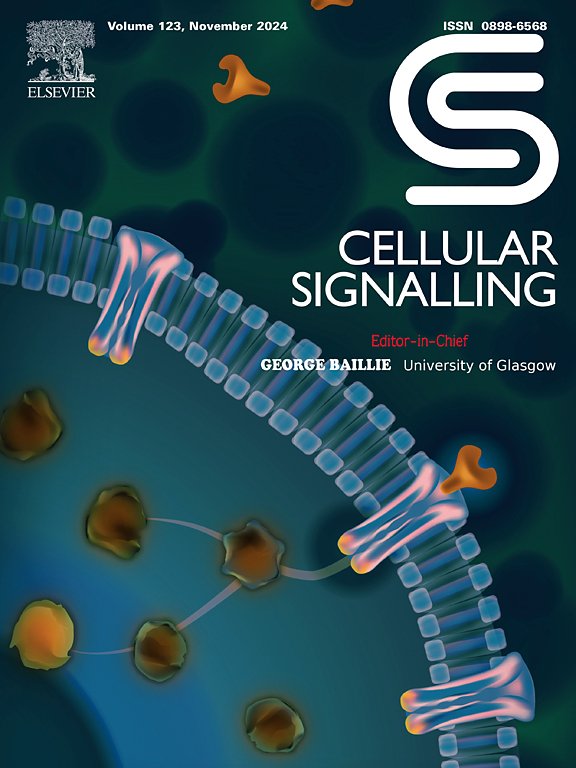Ferroptosis promotes sepsis-related lung injury via endothelial cell senescence
IF 3.7
2区 生物学
Q2 CELL BIOLOGY
引用次数: 0
Abstract
This study investigated the role of ferroptosis in vascular cell senescence induced by sepsis and elucidated the regulatory mechanism of the SIRT4-STAT3-ACSL4 signaling axis. The results showed that ferroptosis was significantly activated in pulmonary vascular endothelial cells under septic conditions, leading to the promotion of cellular senescence and exacerbation of lung injury. Inhibition of ferroptosis effectively attenuated cellular senescence and alleviated sepsis-associated lung damage. This study identified ACSL4 as a key regulator of ferroptosis, with its expression markedly elevated in senescent cells and in the lung tissues of septic mice. Further mechanistic studies revealed that SIRT4 suppresses ACSL4 transcription by modulating STAT3 acetylation, while SIRT4 deficiency enhances both ferroptosis and the senescence phenotype. Functional experiments confirmed that SIRT4 overexpression reversed LPS-induced cellular senescence and ferroptosis. This study highlights the critical role of ferroptosis in sepsis-related senescence and proposes that the SIRT4-STAT3-ACSL4 axis serves as a central regulatory mechanism in lung injury. These findings provide new insights into the interplay between ferroptosis and cellular senescence.
铁下垂通过内皮细胞衰老促进败血症相关的肺损伤。
本研究探讨了铁下垂在脓毒症诱导的血管细胞衰老中的作用,并阐明了SIRT4-STAT3-ACSL4信号轴的调控机制。结果表明,脓毒症条件下肺血管内皮细胞显著激活铁下垂,促进细胞衰老,加重肺损伤。抑制铁下垂可有效减轻细胞衰老和脓毒症相关的肺损伤。本研究发现ACSL4是铁下垂的关键调节因子,其在衰老细胞和脓毒症小鼠肺组织中的表达显著升高。进一步的机制研究表明,SIRT4通过调节STAT3乙酰化抑制ACSL4的转录,而SIRT4缺乏会增强铁下垂和衰老表型。功能实验证实SIRT4过表达逆转lps诱导的细胞衰老和铁下垂。本研究强调了铁下垂在脓毒症相关衰老中的关键作用,并提出SIRT4-STAT3-ACSL4轴在肺损伤中起中心调节作用。这些发现为铁下垂与细胞衰老之间的相互作用提供了新的见解。
本文章由计算机程序翻译,如有差异,请以英文原文为准。
求助全文
约1分钟内获得全文
求助全文
来源期刊

Cellular signalling
生物-细胞生物学
CiteScore
8.40
自引率
0.00%
发文量
250
审稿时长
27 days
期刊介绍:
Cellular Signalling publishes original research describing fundamental and clinical findings on the mechanisms, actions and structural components of cellular signalling systems in vitro and in vivo.
Cellular Signalling aims at full length research papers defining signalling systems ranging from microorganisms to cells, tissues and higher organisms.
 求助内容:
求助内容: 应助结果提醒方式:
应助结果提醒方式:


